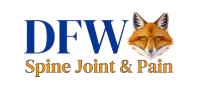CONDITIONS
Conditions We Treat
Spinal Stenosis
A condition in which narrowing of the spinal canal itself occurs, or the regions where the nerves exit the spinal canal may become impinged.
Disc Herniations
These occur most commonly central, paracentral, or lateral to the ligaments which provide stability to the spine. Herniations can directly contact nerve roots exiting the spinal canal and cause pain related to that nerve root innervation.
Arthritis
A group of conditions that cause pain, stiffness, and swelling in the joints. Can lead to further damage in the muscles, tendons, ligaments, and bones.
Chronic Pain
An ongoing condition, such as back and neck pain, musculoskeletal pain headaches, nerve injury pain, regional pain or pain related to illness that has not responded to more conventional therapies.
Hand, Wrist, and Elbow Injuries
Hand, Wrist and Elbow injuries may arise from arthritis, carpal tunnel syndrome, repetitive motion, a sports injury, an accident, a work-related injury or a congenital disorder.
Multiple Sclerosis
A progressive, chronic disease that damages the sheaths of the nerve cells in the spinal cord and brain. Symptoms include numbness, impairment of muscular coordination and speech, blurred vision, and severe fatigue.
Osteoporosis
A disease that causes loss of bone mass and destruction of existing bone tissue, causing weakness in the bones making them more likely to break. The bones most often affected include the hips, spine, and wrists.
Repetitive Motion Injury
An injury to a part of the body caused by performing a repetitive motion over and over again thereby straining the body part.
Spinal Cord Injury, Spinal Trauma
A traumatic injury that can results in either a bruise, partial tear, or total tear in the spinal cord, resulting in decreased sensation, mobility, and body organ function below the level of the injury.
Sports-Related Injuries
Sport injuries range from the mild to severe, and usually result from trauma, overuse, improper equipment, and an excess of physical stress.
Hypogonadism – Low Testosterone
Low testosterone comes with age- T levels naturally decrease by 1% after age 30, though don’t severely deplete, even in advanced age. Blood tests and symptoms are an indication that hormone replacement therapy may be indicated.
